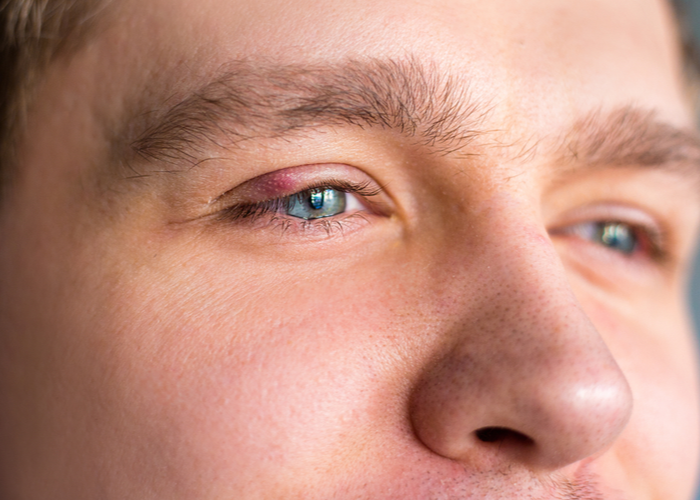
A stye, otherwise known as a hordeolum stye, is a bacterial infection of the eyelid that causes a tender, red lump to form, either in an eyelash follicle gland, known as a gland of zeis (an external stye) or within one of the oil producing meibomian glands within the eyelid (an internal stye). A number of different bacteria can be responsible for the infection in either internal or external styes.
In addition to redness, discomfort and swelling, a stye can have a number of other symptoms, including:
- Light sensitivity
- A rough or gritty feeling
- Irritation like there is something in your eye
- Watery eye
- A crust at the edge of the eyelid
- A droopy eyelid
A stye itself is not contagious but the bacteria can be spread to other people, causing them to develop styes as well.
What Causes a Stye?
Most styes are caused by staphylococcus bacteria, a normally harmless bacteria that lives on the skin. When the bacteria is transferred to the eye or follicle, usually by rubbing or touching, the oil gland or follicle can become infected and swell with pus and infected cells, causing a stye. Much like a pimple, a stye will often form a head after a time, with the tip of the stye turning a brown or yellow colour as the pus is pushed towards the surface.
As touching or rubbing your eyes is one of the major ways in which the bacteria responsible for causing styes enters the eye, conditions that increase the likelihood of eye touching or rubbing your eyes increase your chance of developing a stye. Hay fever and allergies can cause itchy eyes, causing you to rub them, and not getting enough sleep often prompts people to rub their eyes.
In addition to contact between hand and eye, there are some other factors that can contribute to the formation of a stye or make you more susceptible to developing one. These include:
- Leaving makeup on overnight or using contaminated eyeliner or mascara.
- Some skin conditions including rosacea and seborrheic dermatitis.
- Diabetes and other medical conditions that can lower your resistance to infection.
Improper use or care of contact lenses is also a major factor when it comes to the development of styes Not adequately washing your hands before inserting or removing contact lenses, improperly cleaning lenses, wearing contacts while sleeping and reusing disposable lenses can all increase your chances of developing a stye.
If you have a stye and it’s not going away or causing you a great deal of discomfort, the fastest and easiest way to book an appointment with a doctor online is with MyHealth1st.
Preventing a Stye
There are a number of simple things people can do to reduce the risk or prevent the development of a stye, including:
- Observe proper hand hygiene, especially if you are a contact lens wearer
- Use quality eye makeup and remove it before sleep, or avoid wearing eye makeup
- Discard old or rarely used eye makeup
- Make sure your contact lenses are properly cleaned
- Don’t reuse disposable contact lenses
- Use medication to control allergies or skin conditions
Treating a Stye
Most styes can be taken care of at home and should heal within a few days to a week. You can usually speed up the process by using a warm compress on the stye three or four times a day for 10 or 15 minutes each time. This can draw the pus to the surface, forming a head and allowing the stye to drain easily. Once the pus is drained, a stye will heal very quickly as there is little in the way of infected material remaining for your immune system to fight off. That said, you should never attempt to pop a stye as doing so could cause damage to the sensitive tissue of your eyelids or spread the infection to other areas of your eyelid or the surrounding tissue.
If a stye doesn’t go away by itself or causes a great deal of pain, you may need to see a doctor. Antibacterial creams are commonly used for the treatment of styes. In rare cases a doctor may need to lance a stye to allow the pus to quickly drain.